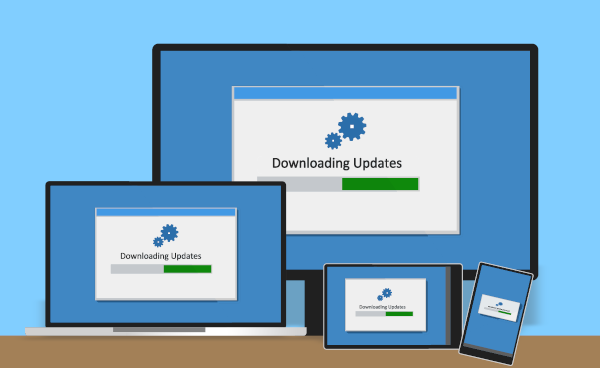
Updates often come at the worst moment: you shut down your laptop to rush to a meeting and see the dreaded “Windows is updating. Do not power off” message! Or you leave your desktop for a minute and come back to find your computer has restarted in your absence – those unexpected bug fixes and performance improvements lost your unsaved work.
You know updates are important as they help patch security flaws. Updating helps you keep your systems up to date and secure. Software updates can also add new, useful features and remove outdated ones. Security patches protect your business from attacks that could also impact employees, customers and partners.
Updating can be a pain but is so important!
The WannaCry ransomware in 2017 attacked hundreds of thousands of computers all across the world. Big and small companies and organisation were hit with the UK National Health Service, FedEx, Telefonica, the Russian Interior Ministry amongst those that were infected.
The Petya ransomware was released after WannaCry and preyed on the same vulnerabilities. But despite the publicity around WannaCry and Microsoft having already released a patch it again spread rapidly around the world.
Still, despite all the warnings and infection people don’t bother updating their computers. According to a Skype survey, 40% of respondents didn’t update their machines when prompted and almost 25% required a second prompt. Nearly 45% of users worried that installing the update would weaken their computer’s security.
Keeping just Windows up to date is not enough. You also need to be patching third-party applications such as Java, MS Office or your Adobe suite. More employees are also bringing their own devices to the workplace. Overlooking security updates for these entry points is like leaving a window wide open and letting criminals walk in.
Equifax’s failure to update a Java virtual machine proved costly. Hackers accessed over 145 million credit reports in 2017. The company lost more than $5 billion in market cap, and the CEO lost his job.
Businesses need a better way to keep your software security patches current and here are some ways to do just that.
Keeping security patches current, conveniently
Avoid the inconvenience of any interruptions by setting up automated patching. Determine when downtime won’t be as disruptive and schedule patches during that time frame. This lets you update an entire department when they aren’t there, or patch individual computers around the employee’s schedule. For instance, if your bookkeeper comes in only on Fridays don’t patch their computer on Fridays!
This approach also creates a consistency your employees can plan around, which allows them to manage all security updates without them having to lift a finger.
To do this, you can outsource the patching to a IT support provider. The provider can install remote monitoring and management (RMM) software to manage all your security updates without you having to lift a finger.
The RMM software gives your IT partner visibility into your business technology. They can also track your hardware software, and network environments to keep ahead of issues. This sets up the IT provider to respond much faster to any events.
Conclusion
Automating or outsourcing your software updates can improve security and compliance. Your employees enjoy new features, extended support and access to the latest technology. A reliable, secure system can improve stability, speed up processes and drive increased productivity.
Get expert help determining patching priorities, or partner with us to handle your updates and also monitor and resolve issues remotely. Contact us on 08 8326 4364 or su*****@dp*********.au.

It is truly a nice and helpful piece of information. I am glad that you simply shared this helpful info with us. And also thank you for your detailed explain.
Nice thanks
Pingback: 11 Ways to Keep Hackers At Bay | DP Computing's Blog
Pingback: 11 Ways to Keep Hackers At Bay - TechmindX